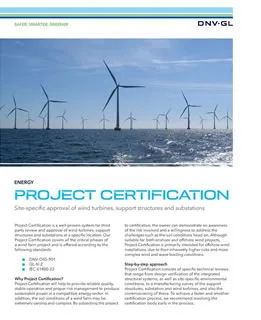Challenge
The coupled analysis of floating systems is a complex problem that needs integration of different disciplines. At the moment, there is not a guideline on how to run the analysis, how to validate the numerical model used for the design and which level of complexity is required for different phases of the project. The lack of standards and recommended practices represents a risk for the stakeholders involved in the development of floating wind turbines.
Floating wind technology is still nascent and has yet to be demonstrated at large scale to become a mature offshore wind technology. It is expected that over the coming years there will be greater consolidation in the market, reaching full-scale demonstration and progressing to commercial-scale deployments. Appropriate standards and guidelines must be in place at that time.
Development
In 2013, DNV published the DNV-OS-J103: “Design of Floating Wind Turbine Structures”, its first standards on floating wind turbines. The standard was the result of a Joint Industry Project (JIP), and has been largely used since its publication for the design of floating offshore structures. Based on the feedback from the industry, DNV has now decided to initiate a second Joint Industry Project to make further progress towards the standardization of floating wind turbines. The goal of this new JIP is to prepare a new standard document, a Recommended Practice, on the coupled analysis of floating wind turbines.
The project is the first of its kind, bringing together multiple stakeholders from the wind, oil & gas and maritime industries, making it the most interdisciplinary project that engages in the technical advancement for floating offshore wind projects to date.
Benefits
Based on the latest knowledge and practical know-how, the joint approach of developing the future Recommended Practice will greatly reduce the risk of inadequate analysis, leading to substantial time savings. Further advantages stem from the focus on the design of floating wind turbines and the validation of numerical models in respect to their subsequent certification. The coherent structure of the Recommended Practice also provides a unified cost structure for the project development process.


